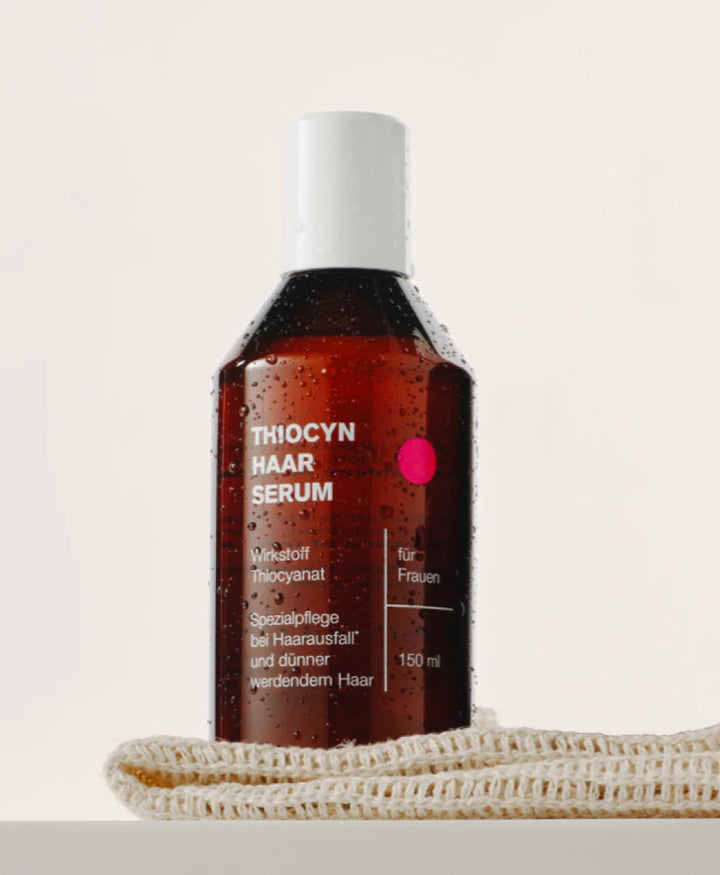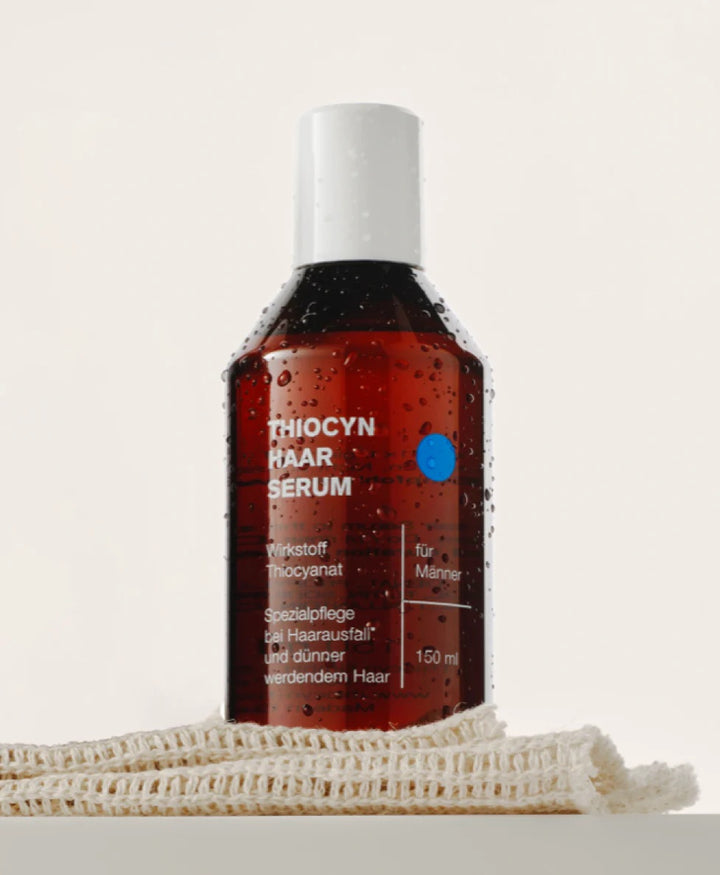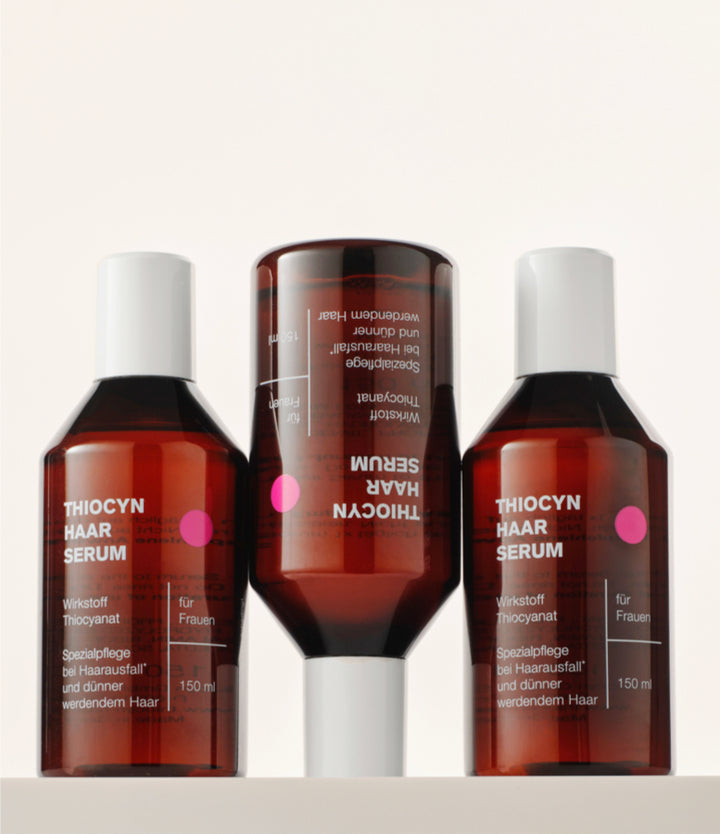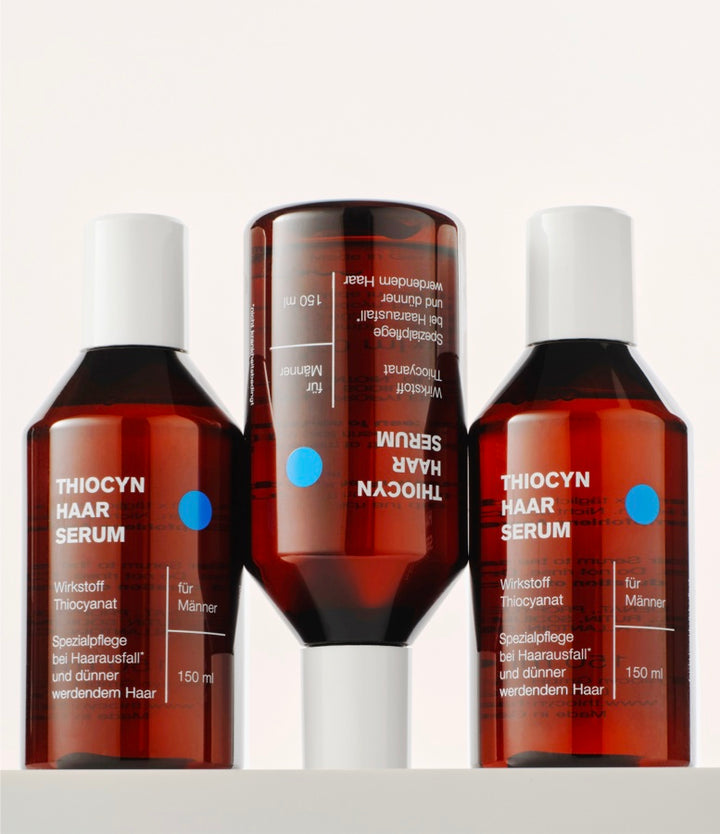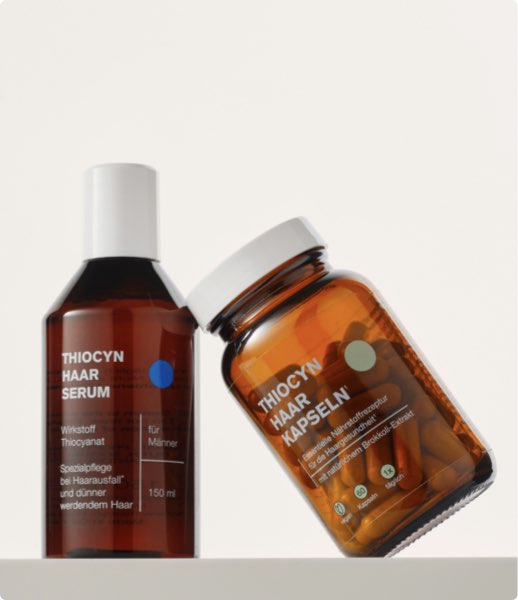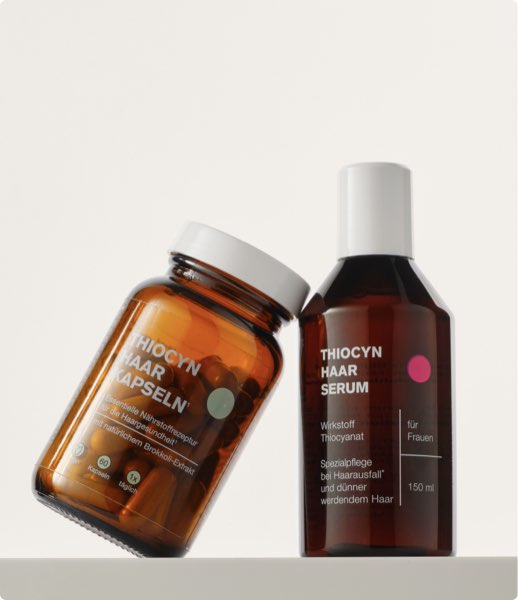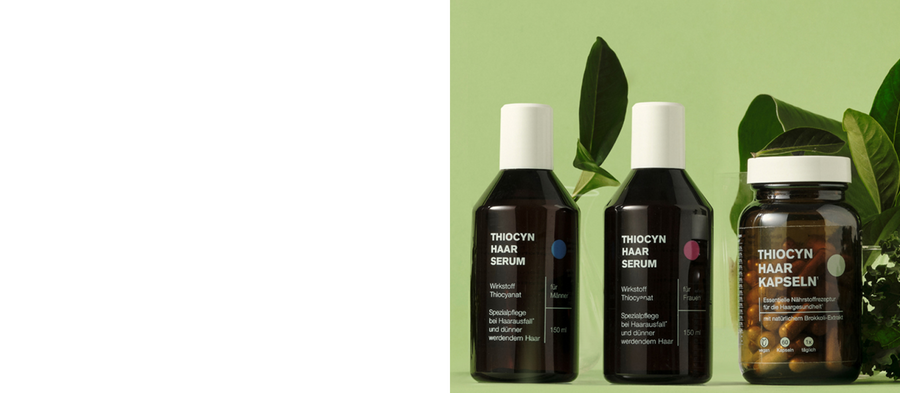| 04. July 2023
Hair loss diagnosis at dermatologist
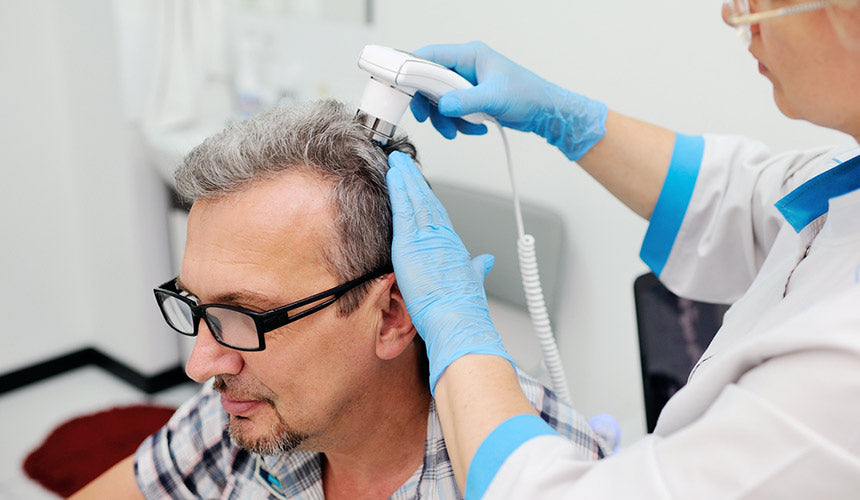
- There are various ways for a dermatologist to predict increased hair loss.
- A detailed diagnosis is helpful in determining the optimal therapy.
- Thiocyanate stimulates the growth of weakened hair follicles and contributes to hair growth.
13Thinning hair, hair loss (effluvium), and hairlessness (alopecia) indicate that something is wrong "up there." But exactly how much hair am I losing? And how severe is my hair problem? Men and women ask themselves these questions. We can see some things in the mirror, but not exactly, especially not the causes. For an exact hair loss diagnosis and analysis, a visit to a doctor—preferably a dermatologist—is recommended. Only then can individual treatment or therapy follow.
Diagnosis of hair loss
From dermatological practice, we know that subjective complaints about hair loss must always be objectively evaluated, especially in order to later assess the effectiveness of a treatment. Reproducible measurement methods that lead to an objective diagnosis are required. A fundamental factor for diagnosing hair loss is the loss of more than 100 hairs per day. If the hair thins, appears sparse, or if bald patches are visible, alopecia is present. The most common form of hair loss is hereditary hair loss, androgenetic alopecia, which can occur in both Man as well as the Woman can occur.
First overview
By visually inspecting the scalp, the trained eye can initially identify whether a particular hair loss pattern is present. Receding hairlines, sparse, thinning hair, or the beginning of a tonsure (in men), or thinning hair at the center parting (in women) can be relatively quickly identified as hereditary hair loss.
Dermatologists will easily identify the diffuse alopecia areata Redness or flaking, which indicate diseases such as psoriasis, cannot be ruled out as possible causes of hair loss.
More insights – using the reflected light microscope
In some cases, it is advisable to conduct a clinical examination to determine the hair anchorage. This is done using a reflected-light microscope. The doctor examines the scalp using immersion oil, ultrasound gel, or polarized light, as well as a microscope, down to the deeper layers, specifically down to the hair root in the dermis. This allows for clear detection of any irregularities in the hair and scalp.
Further diagnostic options
For further diagnosis of hair loss, patient records and a list of currently used medications provide valuable information. A review of family history also provides the doctor with insight. Blood tests can reveal deficiencies in the body's vitamins, trace elements, and hormones, as well as infections or previously undetected diseases, as causes of hair loss.
A “classic” diagnosis is not uncommon Iron deficiency or a Thyroid dysfunction, both of which lead to diffuse hair loss. In some sufferers, even a biochemical Hair mineral analysis It may be indicated, or a scalp sample may be taken for histological examination. A scalp tissue sample is generally only necessary in cases of scarring or unclear, non-scarring alopecia.
Hair loss diagnosis with the computer: TrichoScan
Finally, the TrichoScan (“tricho” ancient Greek for hair and “scan” EnglishCompared to the classic trichogram, the trichogram is an elegant method of computer-assisted hair analysis on living hair. The advantage: the hair and scalp are largely spared during the hair loss analysis:
The hairs are shaved in a circle with a diameter of approximately one to two centimeters to a length of 1 mm. After three days, they are color-coded to ensure no hairs are missed, including light-colored hairs and downy hairs. A digital microscopic image is taken using a Fotofinder reflected-light microscope at 20x magnification.
Special software scans the image and then automatically evaluates it. The TrichoScan program detects the percentage of hairs in the growth and resting phases (hair follicles without hair), distinguishes between miniaturized downy hairs and fully grown terminal hairs, and calculates length growth, hair density, and hair fullness.
Since hair analysis with the TrichoScan is completely painless, takes only a few minutes, and can determine the type of hair loss very precisely, it is highly recommended. It is billed in dermatology practices as an individual health service (IGeL) for €75 to €100.
Measurable success and therapy
Digital storage of TrichoScan results allows for optimal comparability. Follow-up examinations during the course of therapy can be used to determine whether the selected measures are achieving the desired results. As an objective and "incorruptible" method, the TrichoScan is used in clinical dermatological studies. This is also the case in the post-marketing study of our special treatment for hair loss* and thinning hair, Thiocyn Hair Serum: The TrichoScan demonstrated an average of 30% less hair loss and an average 13% increase in hair density.
But the best thing is to try out the Thiocyn hair serum for yourself!
To stimulate the growth of weakened hair follicles, a bit of patience is required – given the length of a hair cycle (approximately three to seven years). The Thiocyn hair serum contains ThiocyanateThe active formula can only be effective if applied once daily over a longer period of time. Treatment should be continued for at least four to six months to see initial results.
Read by 23,000 people
Do it like 23,000 others and find out how you can improve your hair health - with great offers and discounts as well as helpful advice
